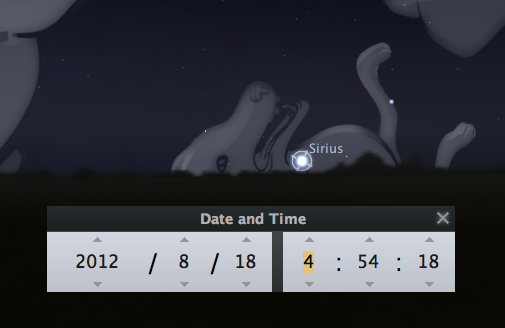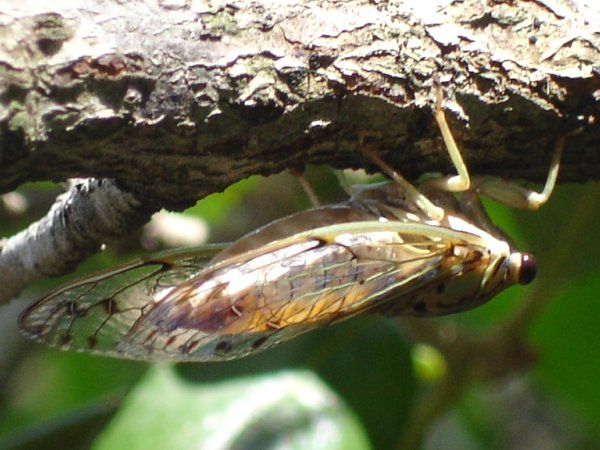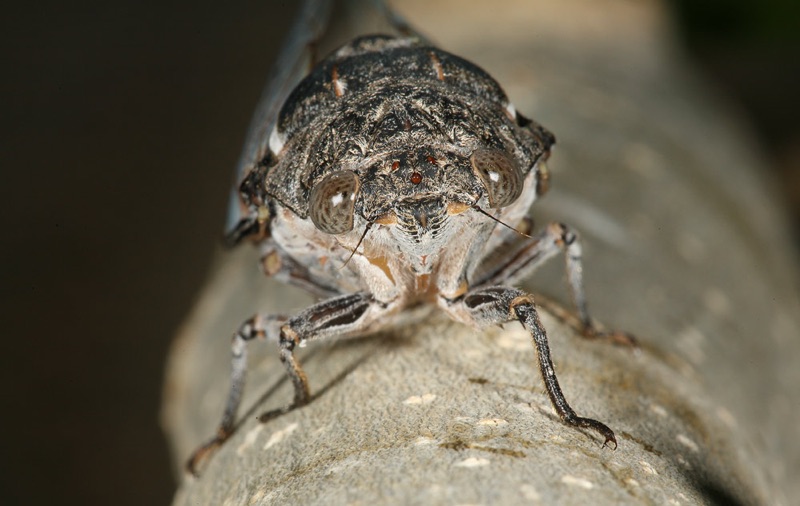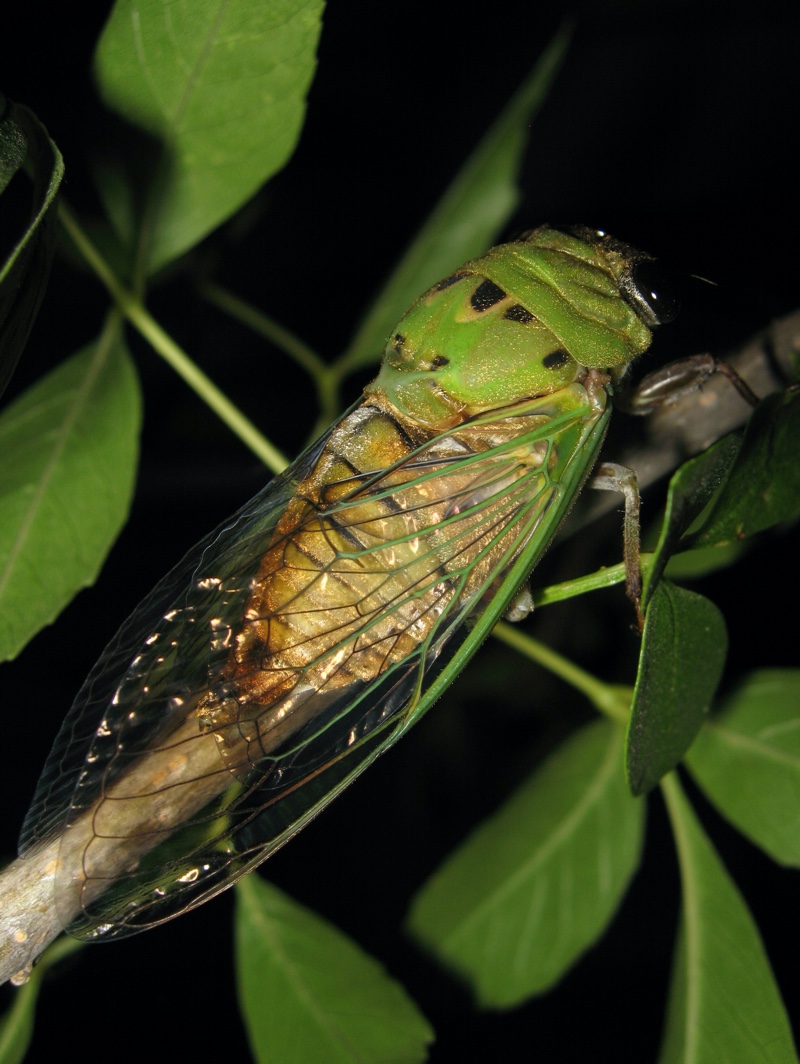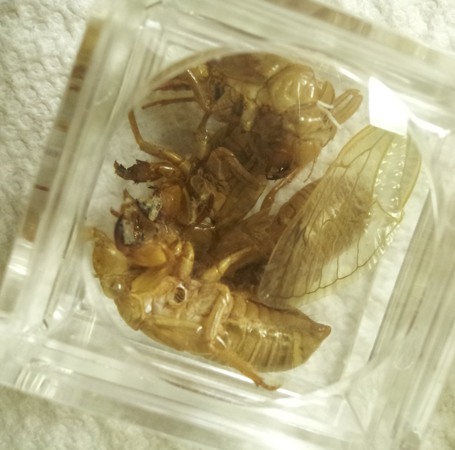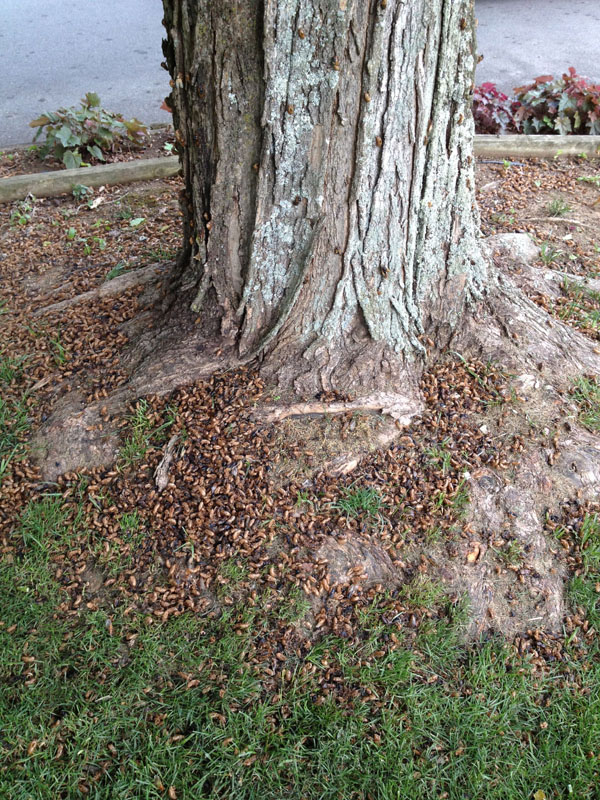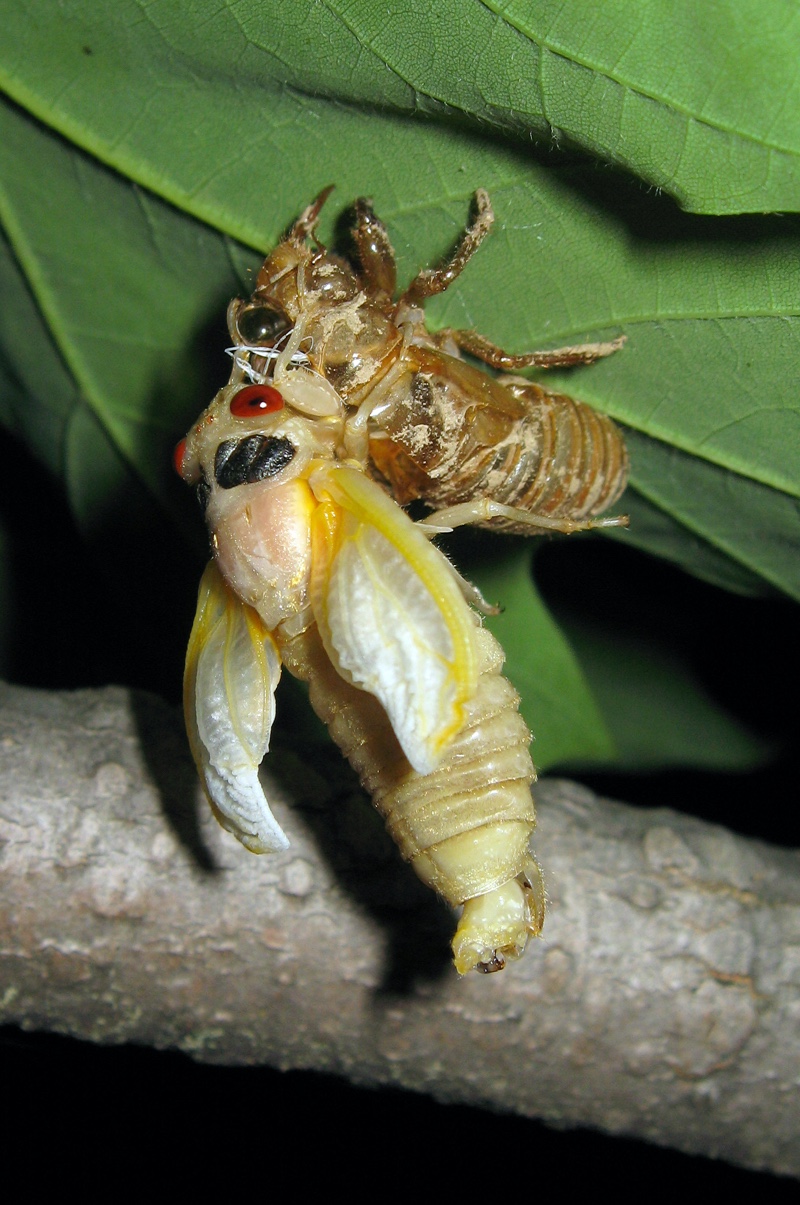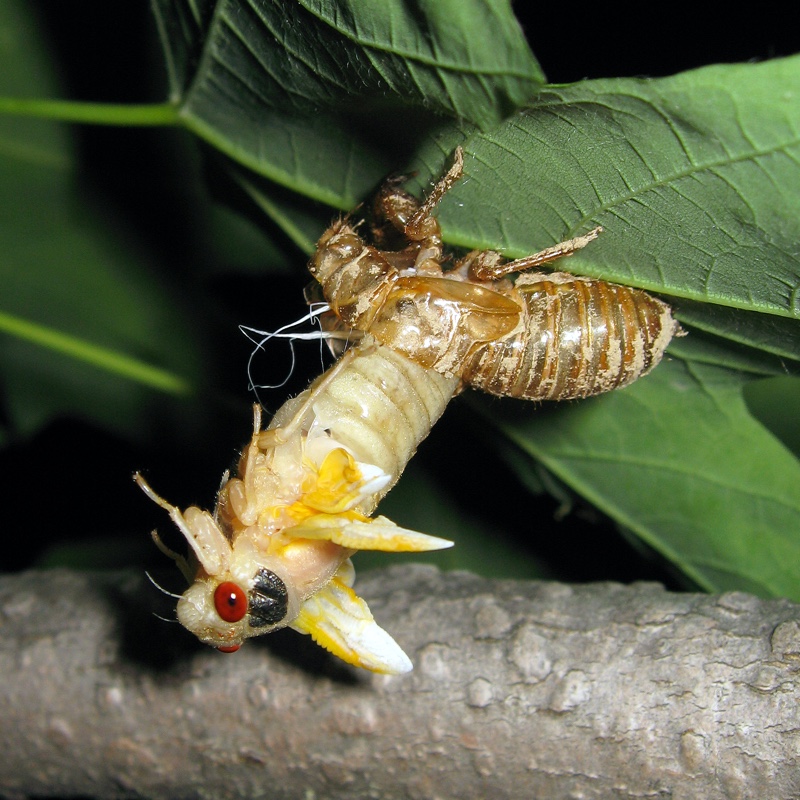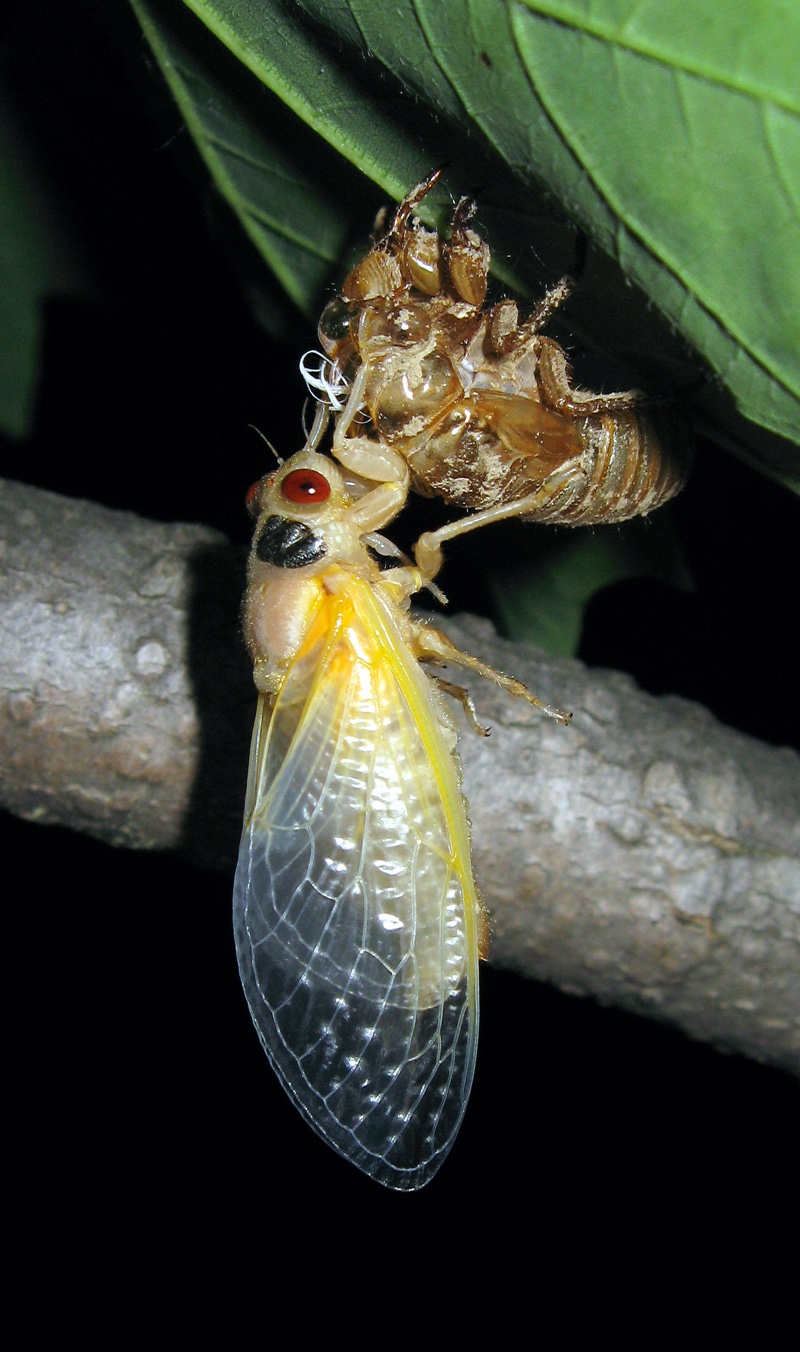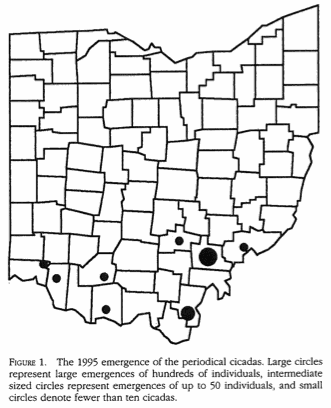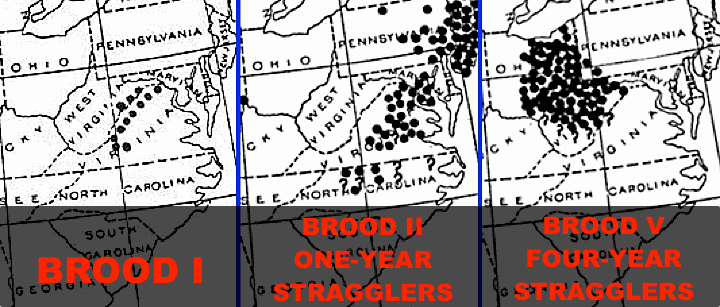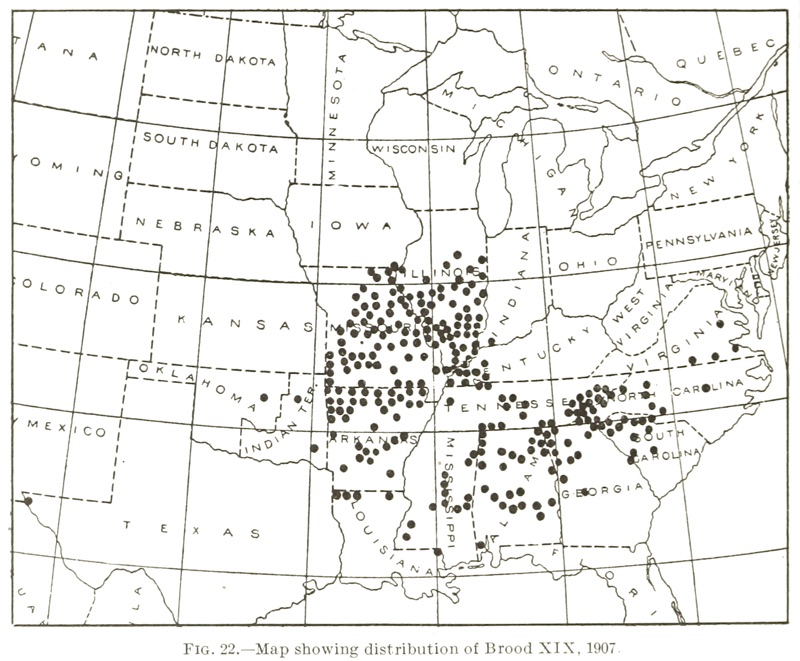Brood I, a brood of 17-year Magicicada periodical cicadas, emerged in the spring of 2012 in western Virginia, a small part of eastern West Virginia, and (expected by some, unexpected by others) in the Tri-Cities area of Tennessee.
The emergence in Tennessee caught some (myself included) by surprise, because it is not on Brood I maps, but folks in the Tri-Cities area say they expected it. Brood I is known as the Blue Ridge Brood because it exists along the Blue Ridge Mountains. The Tri-Cities area of Tennessee falls within the Blue Ridge Mountains, so the nickname of the brood works for Tennessee as well. I’m sure that there will be debate as to whether the Tri-Cities cicadas belong in Brood 1; we’ll know for sure in 2029.
Brood I emerged earlier than expected due to unseasonably warm weather in Virginia. On April 23rd, Barbara Dekorsey reported the following on the Cicada Mania Facebook page: “My kids and I saw periodical cicadas emerging on Blue Ridge Parkway MP 114.9, at the Roanoke River Trailhead (Roanoke, VA). It was wet and cool, and many of them were dead or dying with poorly formed wings.” Unfortunately, the moment when many cicadas began to emerge, the weather switched, greeting cicadas with wet, windy, cold weather, which resulted in cicada deaths and deformities due to harsh weather. Plenty of cicadas emerged unscathed, though, so the brood will live on.
Brood I is a small, but interesting Brood.
More information:

